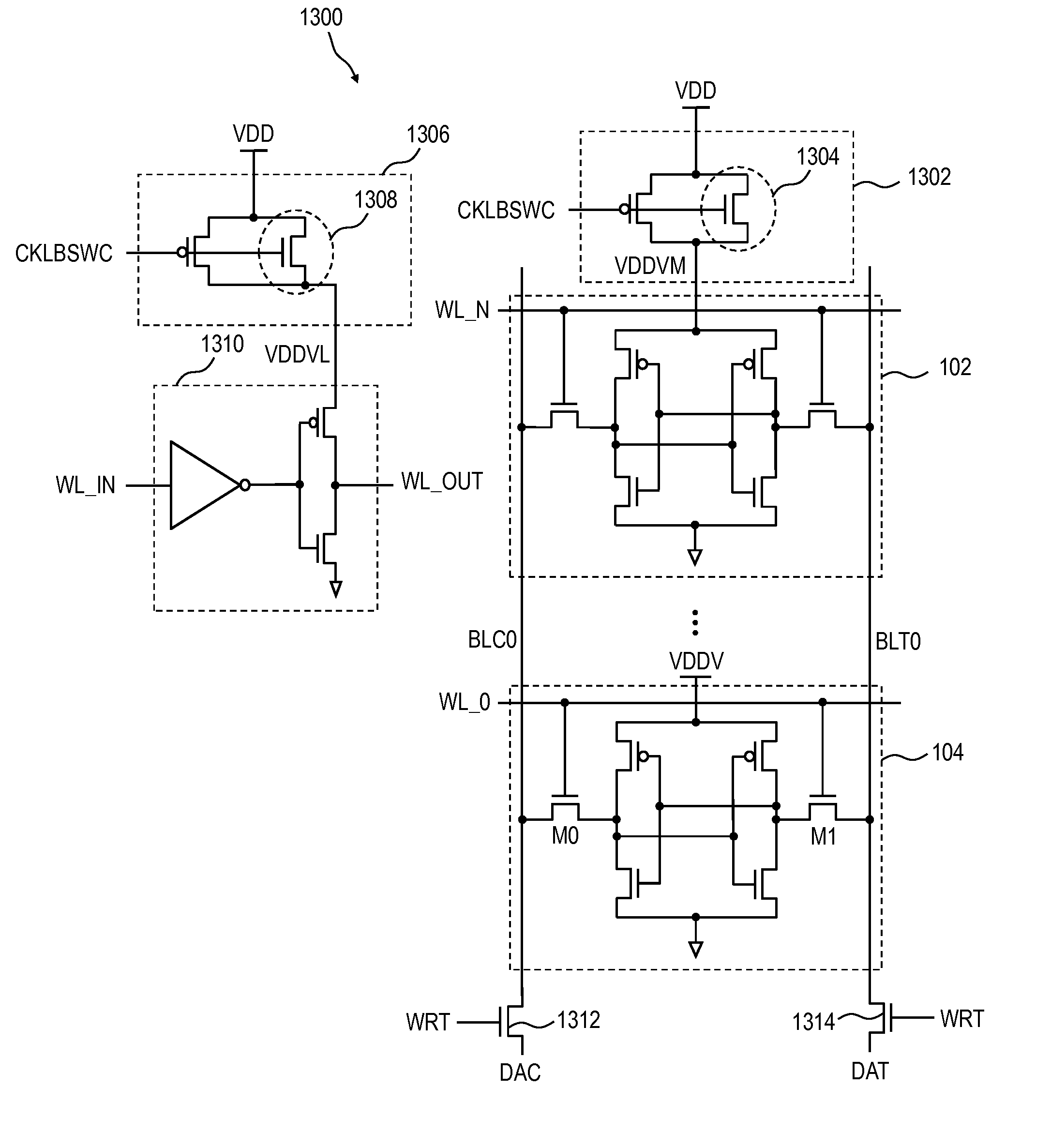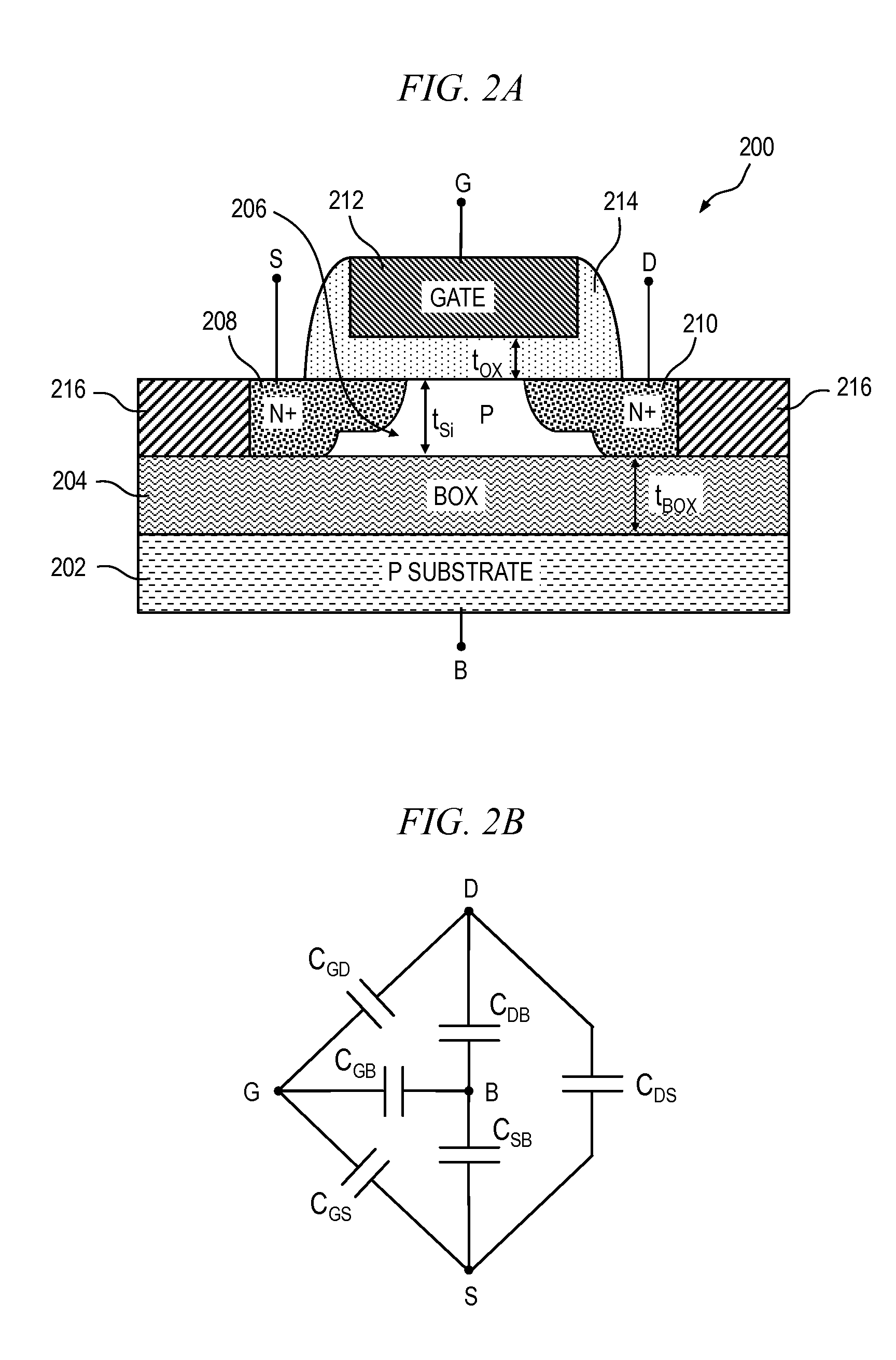Finfet-based boosting supply voltage circuit and method
a supply voltage circuit and circuit technology, applied in the field of electrical, electronic and computer arts, can solve the problems of increasing the complexity or overhead of the circuit, increasing the area of the integrated circuit (ic), etc., and achieves the reduction of circuit complexity and overhead, improving performance, and increasing the operating voltage range of the circuit.
- Summary
- Abstract
- Description
- Claims
- Application Information
AI Technical Summary
Benefits of technology
Problems solved by technology
Method used
Image
Examples
Embodiment Construction
[0023]Principles of the present invention will be described herein in the context of illustrative embodiments of a memory architecture (e.g., employing 6T or 8T SRAM cells) and logic circuitry employing dynamic voltage supply boosting. It is to be appreciated, however, that the invention is not limited to the specific circuits and / or methods illustratively shown and described herein. Rather, aspects of the invention are directed more broadly to techniques for reducing a minimum supply voltage (Vmin) of a circuit, thereby increasing an operational supply voltage range of the circuit. Voltage supply boosting circuitry formed in accordance with embodiments of the invention provide improved performance, particularly a reduced minimum operational supply voltage, without a need for multiple voltage supplies, and are thus well-suited for use in low power applications. Moreover, it will become apparent to those skilled in the art given the teachings herein that numerous modifications can be...
PUM
 Login to View More
Login to View More Abstract
Description
Claims
Application Information
 Login to View More
Login to View More - R&D
- Intellectual Property
- Life Sciences
- Materials
- Tech Scout
- Unparalleled Data Quality
- Higher Quality Content
- 60% Fewer Hallucinations
Browse by: Latest US Patents, China's latest patents, Technical Efficacy Thesaurus, Application Domain, Technology Topic, Popular Technical Reports.
© 2025 PatSnap. All rights reserved.Legal|Privacy policy|Modern Slavery Act Transparency Statement|Sitemap|About US| Contact US: help@patsnap.com



